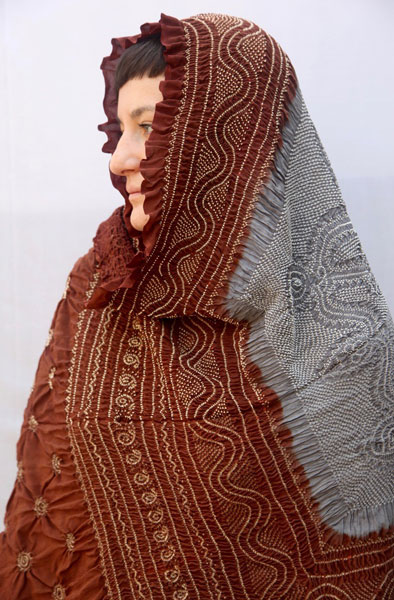I have always been fascinated by Gujarat… for its colour, people and its plethora of textiles. The women with their red bandhini odhnis, swirling skirts, heavy silver jewellery and dangling earrings are fashion icons in their own right. Not to be ignored, the bejewelled men in their beautifully tailored peharans and dhothis, wearing the most colourful of turbans, handcrafted to perfection, and usually made from bright red cloth with little dots.
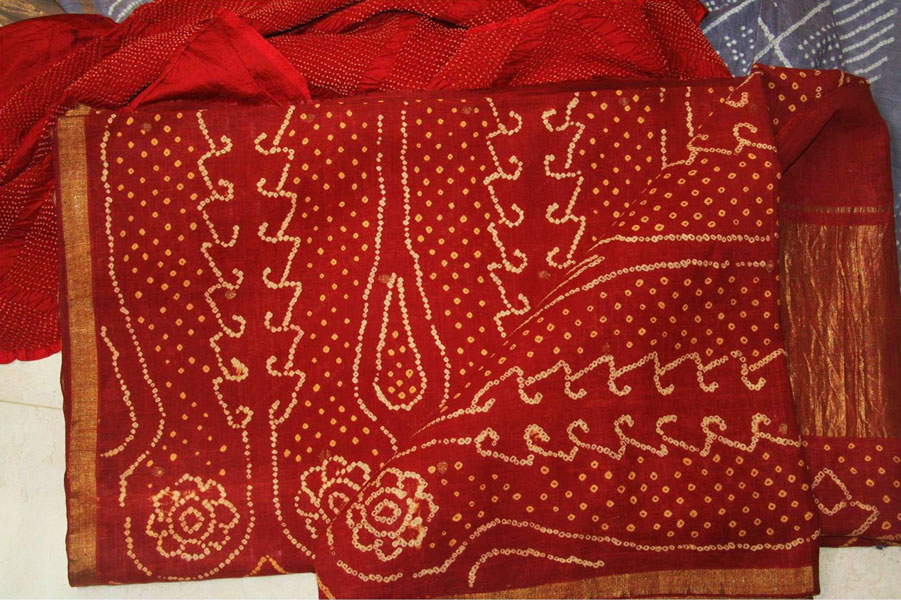
Judging from the small fragments of silk discovered in the medieval period, Jain monks used silk to cover their manuscripts and paintings.
I have ridden in rickety buses with the craft folk, and rubbed shoulders with them as they chit-chatted and craned their necks to see if they have arrived at their destination. Embroidery skills are handed over from mother to daughter and the products embellished with a riot of colours are preserved as dowry pieces.
Bandhini is the prime craft here but it is not possible to ascertain the exact period when the craft of tie and dye originated in Gujarat. It is conjectured, judging from the small fragments of silk discovered in the medieval period, that the Jain monks used the silk to protect their manuscripts and paintings and the bandhini technique transferred to Gujarat by communities of craftsmen who migrated from Sind, most likely in the 16th century. Jamnagar was one of the earliest dyeing centres for bandhini as the water here brings out the intensity of colour in the dye. Very intricate designs are done in Kutch, and sent to Jamnagar for dyeing and marketing. The Khatri community of textile craftsmen, both Hindus and Muslims, are the main protagonists of bandhini production since the 17th century. According to legend, the Khatri community took up weaving to escape the wrath of Parashurama (an avatar of Vishnu) who was a staunch defender of Brahmins.
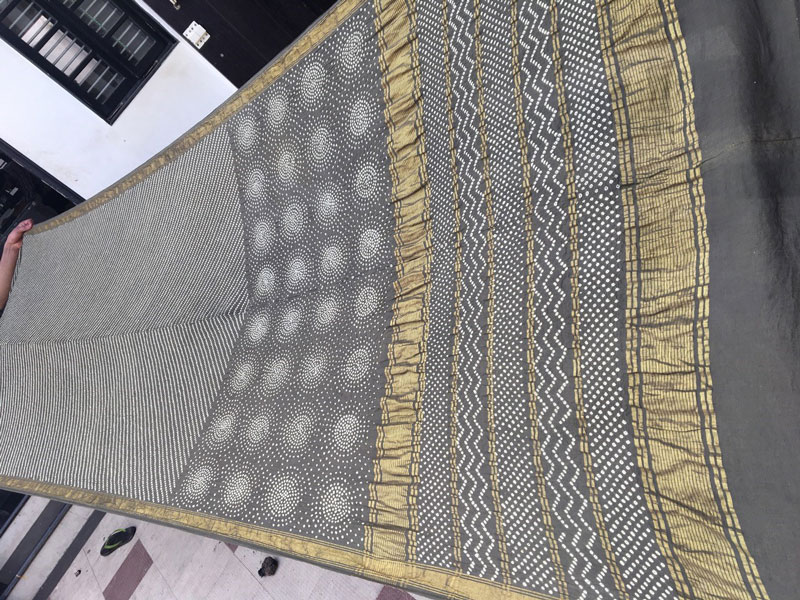
Bhuj and Kutch follow a complicated process. The fabric is bleached and folded precisely into several layers, and fixed by stitching the borders of the folded fabric. The rangari or colour-specialist marks the design on the topmost layer. Using a mixture of burnt sienna and water, smeared on a cord, he draws lines with it to mark the field of design. Then he stamps the design, using wooden blocks dipped into the same colour. Next he chooses the portions of the fabric, which have to preserve its base colour. These small portions are pushed up with a pointed nail. The projected portions are bound with string and the same process is repeated from one dot to the other. It is only the women and girls who carry out this delicate art of tying as it is a skill very rarely acquired by men. The first colour dyed is a light colour, usually yellow. The portions, which need to remain yellow, are again tied and the fabric dyed in a darker colour. The tie-and-dye process is repeated for as many colours as required. This technique is applied to the sari borders as also the pallu. With the present-day cold dyes and plastic foil easily available for wraps, the process is somewhat simplified, but the fact remains that it is the handcraft which makes the effect so breathtakingly beautiful.
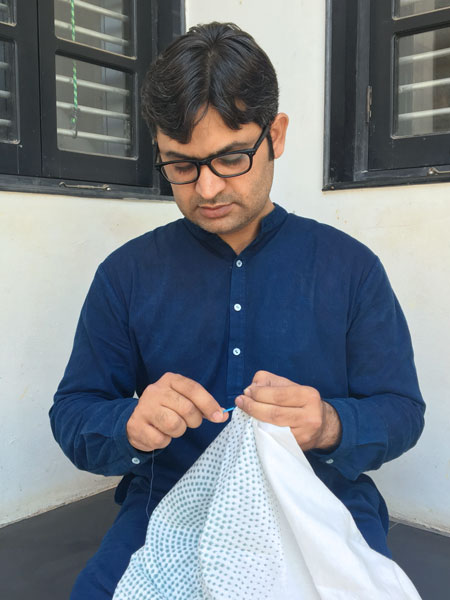
Bandhini fabric is often sold without the tied thread removed, and today the crinkled effect is in vogue. The more gossamer the fabric, the better the design shows off. Georgettes, mulls, kotas and light silks do best with bandhini. Of course, heavier silks are also used, like satins and gajji silks, but they are more difficult to work with. Bandhini is worked on odhnis, turban material, shawls, as also fabric, for contemporary garments such as skirts, tops and kurtas.
Jabbar’s story is a classic example of learning traditional skills alongside education which is the dream of every craft activist.
Like many of the age-old textiles, bandini has a socio-religious significance. The Gharchola, or the zari chowkda, gifted to the bride by her in-laws, mostly in the Marwari and Jain communities, either in cotton or in gajji silk, is a traditional wedding sari in bright red with thick zari checks in seven patterns of bandhini enclosed in the squares. The bride wears this over her head during the wedding rites. The vira bhet bhat, the brother’s offering, is distinctive for its ceremonial significance.
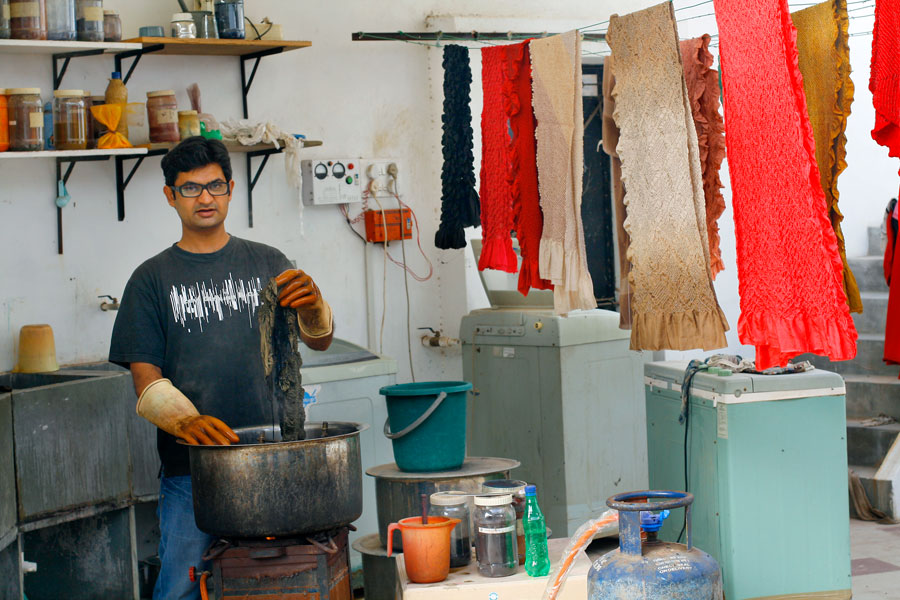
The Khoja community produced interlaced circular designs as also the leharia designs, which brought in the bandhini in waves or zigzag patterns. The Kutch bandhini workers tie multiple designs in squares of parrots, elephants, birds, lotuses, jewels, women, etc, and add the green colour where required. The bavanbagh, which is literally “52 gardens”, usually has the ties in green and red with diagonal squares containing different motifs in each square like the chakli chaklo, haathi(elephant), puthli (doll), mor (peacock), popat (parrot), pachak (five circles), panihari (figure carrying a pot), leher (wave) and kharek (as in grapes). Some of the upper classes enhance the work further with gota, attaching other borders, and embroidery.
The Khatris are a family of centuries-old traditional tie dyers, living in Khatri Chowk in Bhuj for generations, and as is usual, faced competition from the mill-produced duplicates which were sold much cheaper becoming a threat to this hand-crafted tradition. Abdul Jabbar Khatri, who told me this story, described how his great grandfather began to make fireworks for royalty and took to bicycle repairing, while his father got a job with a bank. Simultaneously, the Government began to promote bandhini at national and international levels.
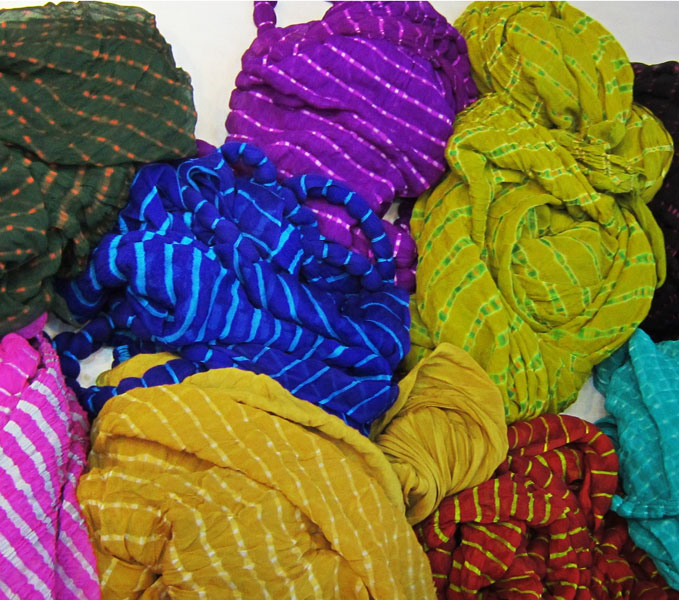
Jabbar’s story is a classic example of learning traditional skills alongside education which is the dream of every craft activist. He, along with his brothers, learnt the intricacies of dyeing and tying the fabric using age-old techniques from experts in the family. Jabbar graduated in Commerce and this helped him understand the world of business and economics. The break came when he was invited by the National Institute of Design for a workshop organised by the Shibori World Network, which led to an introduction to Dosa Inc, a US based company specialising in garments, whose representatives worked on a collection of tie-and-dye garments with the Khatri family.
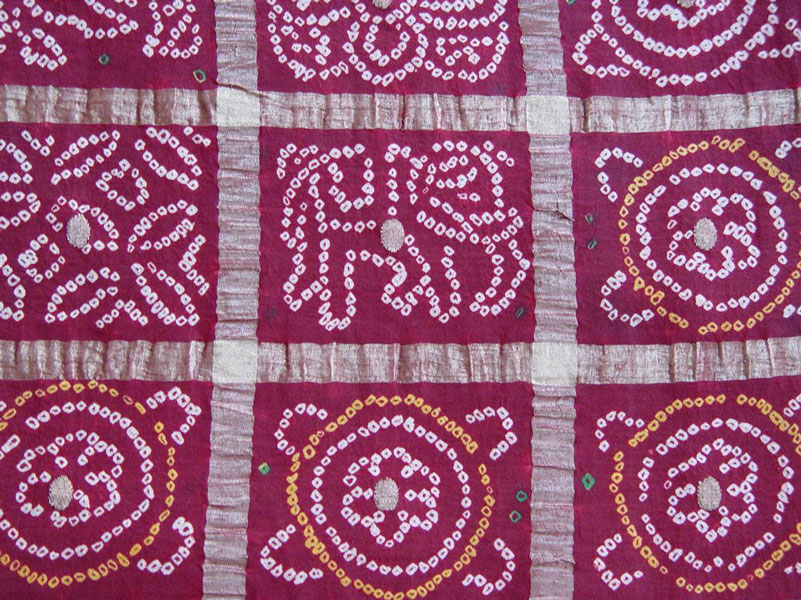
Abdul Jabbar got the UNESCO Seal of Excellence and the World Craft Council Award of Excellence, and the Shanta Prasad Award from the Crafts Council of India. The family made inroads into the Santa Fe International Folk Art Market and in 2007, he participated in a programme on traditional textiles sponsored by the Warwick University, UK, held at the Victoria & Albert Museum. I prize the sari I ordered from him, a contemporary star-spangled bandhini kota against a sky of midnight blue; it is unusual and captivating.
The Khatris have worked with Indian fashion designers such as Tarun Tahiliani, Aneeth Arora, Abraham & Thakore, Rajesh Pratap Singh, Neeru Kumar and international buyers under the name of SIDR Craft.
The challenge, for these artisans, is to retain their image as folk artists, and at the same time create new products that are contemporary, usable and affordable.
Pictures by Sabita Radhakrishna






